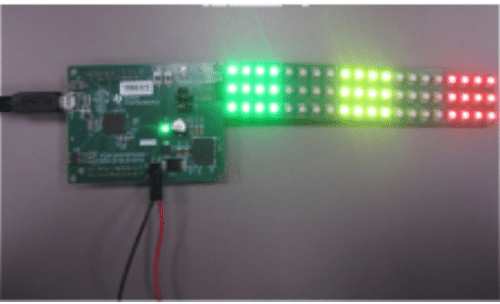The RGB LED Signal Tower enhances industrial safety and efficiency with customizable, user-friendly visual alerts, ideal for automation environments.

RGB LED Signal Towers are indispensable tools in industrial and manufacturing settings, primarily because they provide clear and immediate visual communication and alerts. These towers, utilising bright and customizable Red, Green, and Blue LED lights, effectively convey crucial information in environments where audio signals may be ineffective or missed. The versatility of RGB LEDs allows for a wide range of colour-coded signals, which are instrumental in indicating various statuses, alerts, and emergencies. This capability not only enhances workplace safety by promptly alerting workers to potential hazards but also aids in improving operational efficiency and productivity through real-time status updates. Moreover, LED technology’s energy efficiency and longevity make these signal towers a cost-effective and durable solution for modern industrial needs. Their integration with control systems further adds to their utility, enabling automated alerts and remote monitoring, streamlining workflow and minimising downtime.
TIDA-00979, a reference design from Texas Instruments (TI), presents a multifaceted RGB signal tower tailored for industrial process automation. It offers adaptable control over both the LED colour and brightness, alongside the capability to modify the number of LED segments. This design introduces a smart-process condition and safety indicator, enabling the detection and software-based configuration of various industrial stack lights. The design finds its application primarily in Factory Automation and Control and Building Automation, where it can significantly enhance operational efficiency and safety.
The design boasts various features, including a flexible and user-friendly RGB LED tower light. It offers multiple configurable modes such as Stack Light, Level Indication, and Flashlight. Users can easily control the RGB colour, brightness, and blinking speed to suit their needs. The design accommodates one to five RGB LED segments, each with four individual channels. Additionally, it allows for the adjustment of the maximum LED current, with a limit of up to 60 mA for each channel.
The reference design is powered by a supply voltage ranging from a minimum of 18V to a maximum of 36V, with an output voltage of 12V (and an alternative 5V). It incorporates several interfaces, including General-Purpose Input/Output (GPIO), Serial Peripheral Interface (SPI), Inter-Integrated Circuit (I2C), Universal Asynchronous Receiver-Transmitter (UART), and Universal Serial Bus (USB). Additionally, the design is compatible with the LaunchPad Development Kit and BoosterPack. The LED system, utilising RGB LEDs, supports a maximum of 60 mA for each channel and includes features for brightness control. Moreover, it is designed to be daisy-chainable, allowing for extended and customizable configurations.
TI has tested this reference design. It has a Bill of Materials (BOM), schematics, gerber file, PCB layout, etc. You can find additional data about the reference design on the company’s website. To read more about this reference design, click here.






